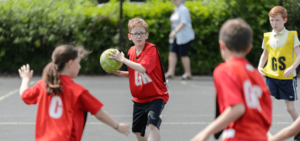The physical benefits of sport are undeniable. The real news from the past few years has been all the research confirming that taking part in sport or physical activity has a (huge) positive impact on your mental and physical health. Yet the fittest five children in a year 6 class today are less fit than the least fit were 20 years ago.
How physical activity can stimulate positive mental health
Participating in sports has long been on the school curriculum; teachers have long been of the opinion that there are many benefits to taking part in sporting activities, team sports in particular. But in many schools across the UK it is being squeezed out for that last minute revision or other remedial academic study.
 Sport England’s recent published figures have shown that although Covid-19 lockdowns and home schooling reduced the number of children and young people taking part in physical activity, it is by no means as much as many had feared. Their latest Active Lives Children and Young People Survey found that in the 2019/20 academic year, 45% of children and young people were meeting the Chief Medical Officer’s guidelines – doing sport or physical activity for an average of 60 minutes plus per day – just a 2% decrease on the previous academic year.
Sport England’s recent published figures have shown that although Covid-19 lockdowns and home schooling reduced the number of children and young people taking part in physical activity, it is by no means as much as many had feared. Their latest Active Lives Children and Young People Survey found that in the 2019/20 academic year, 45% of children and young people were meeting the Chief Medical Officer’s guidelines – doing sport or physical activity for an average of 60 minutes plus per day – just a 2% decrease on the previous academic year.
Sport and physical activity programmes online, such as Joe Wicks’ ‘PE with Joe’ helped enormously in encouraging children and young people to continue with exercising. But as children and young people return to schools, colleges and universities, how can teachers and parents encourage a positive sporting environment?
Encouraging a positive sporting environment
Public Health England’s publication, ‘Guidance to Increase Physical Activity Among Children and Young People in Schools and Colleges’, sets out 8 key principles to encourage a positive sporting environment:
- Develop and deliver multi-component approaches – adopting a ‘whole community’ approach that incorporates curricular learning with culture, ethos, environment and engagement across the school/college community. Develop a school-to-school support network where you can discuss ideas, challenges and solutions to problems in order to improve attitudes to sport.
- Ensure a skilled workforce – ensuring staff have the competence and confidence in providing sport and physical activities. An earlier blog talks about role modelling and mirror neurones: Children are genetically wired to copy their teachers, so engage sportspeople to teach sport and PE. And just because someone may be injured doesn’t mean they can’t take on another role, such as referee or coach.
- Engage the students’ voice – giving students a voice and encouraging them to take ‘ownership’ of physical activity that will bring energy and creativity to the activities way beyond what us adults can invent. Give students responsibility and engage with them, and their families, ask what they’d like to try and take on board what isn’t working.
- Create active environments – ensure there is good access to sport and physical activities including equipment, play materials and open spaces.
- Offer choice and variety – offering a wider variety of sport and physical activity opportunities, as well as a balance between traditional sports and more fun games. Invite all local sports and activity providers to be listed on your “local clubs” ideas board to share with parents, and invite them in to do taster days.
- Embed in the curriculum – increase the amount of physical activity time in the curriculum.
- Promote active travel – contributes to children and young people’s physical activity levels. Always make sure personal safety is a priority and students get home safely after an away game, which also reassures parents and carers.
- Embed monitoring and evaluation – consistent, effective evaluation of physical activity.
However, whilst these present useful guidelines, essentially children and young people love playing sports because:
- The more fun it is, the more engaged they are and the more willing they are to take part.
- Learning and developing new skills helps them be better at their sport or physical activity and so boosts confidence and performance.
- They feel good – which is healthy – and develops their fitness, in and out of school.
- Humans are wired to be active. It’s how we develop important parts of our brain, and helps us achieve more in all walks of life.
Ultimately, physical activity builds the brain so teachers can fill the brain!
Great Athletes is a social enterprise that works with top athletes from around the UK and Ireland visiting primary schools to inspire and encourage kids of all abilities, and teachers, to be more active. Our mission is to Activate, Educate, Motivate and Innovate schools and parents through a series of events and workshops. If you’d like your school or parents to get active, get in touch with us and see how we could help you inspire our next generation.

